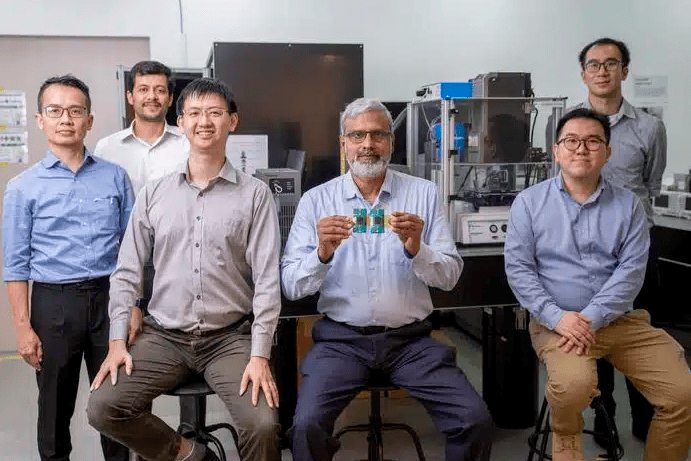The multi-material printer works by utilizing varying wavelengths of laser – creating thermal and chemical reactions capable of transforming common carbon-based materials (polyimide and graphene oxide) into a new type of highly porous graphene. The resulting structure printed with this new graphene is not only light and conductive, but it can also be printed or coated onto flexible substrates like plastics, glass, gold, and fabrics – creating flexible devices.
Electronic devices and components have traditionally been comprised of rigid materials such as metals, silicon, and ceramics, but there has been an increasing interest in the creation of flexible wearable electronics that can be bent, twisted, and easily conformed to various surfaces.
“Our project aims to find a way to 3D print new materials like organic polymers and carbon-based materials like graphene, which has properties that allow them to be printed or coated onto flexible substrates like plastics or fabrics, creating flexible and stretchable circuits,” said Associate Professor Murukeshan Vadakke Matham, from the NTU School of Mechanical and Aerospace Engineering (MAE) and SC3DP, Principal Investigator at Singapore’s National Additive Manufacturing Innovation Cluster (NAMIC), and co-lead on the project. “3D printed flexible electronics paves the way for more comfortable and mobile wearable devices as it can be lighter and smaller. We can now create unique structures that were previously impossible with traditional rigid electronics.”
3D printed sensor for smart intravenous fluid bag
The newly created 3D printer has already attracted interest from various companies, including American multinational manufacturer JABIL-MTI Penang.
JABIL-MTI Penang aims to integrate 3D printed graphene-based electronics into a smart infusion system. A proof of concept has been demonstrated through a prototype of a low-cost intravenous (IV) fluid bag with an embedded printed sensor, powered by artificial intelligence. The device monitors the status of the IV drip, regulates parameters such as pressure flow and temperature, and transmits the information to a smartphone, in real-time. This allows medical personnel to remotely monitor, control, and detect abnormally efficiently.
The research team also tested the possibility of integrating 3D printed components into the fabrication of high-performing electronics like pressure sensors and heaters – thanks to funding support from NAMIC.
“Our technology allows the creation of highly porous and conductive graphene-based material for use in different applications. Compared to traditional graphene manufacturing methods, our method is faster, cheaper, and highly compatible with a wide range of materials,” said Dr. Low Mun Ji, General Manager of Panasonic, and co-lead on the project.
The NTU-Panasonic team believes that the newly created multi-material 3D printer offers a level of flexibility and functionality unmatched by other similar products in the market. The project members said the innovation has the potential to revolutionize the field of 3D printing and open new possibilities for new product design and innovation.
The project was launched in 2016 with the support of the Singapore Economic Development Board (EDB), under the Industrial Post-graduate Programme (IPP). Over the years, the project team has filed two patents, presented at 11 international conferences, and published 11 papers. It has also supported three Panasonic scientists and engineers who completed a doctorate degree from NTU Singapore.
“At the Singapore Centre for 3D Printing (SC3DP) we are investigating the use of additive manufacturing for many applications and industrial sectors, including electronics and wearable devices. Panasonic is a strategic partner, and I am very pleased with the excellent results achieved through this project. This was possible thanks to the hard work of the team of researchers from both SC3DP and Panasonic. The project is a good example of the technical and scientific capabilities available at our center, and how we can support the industry and create value,” said Professor Paulo Bartolo, Executive Director at SC3DP.
Panasonic has now set up a new facility for laser-based manufacturing systems, at its research hub in Singapore, to enable further trials of concepts using components fabricated by the multi-material printer, as part of “Autonomous Factory” – a Panasonic concept for smart factories of the future. The new facility is to be led by Dr. Low, and researchers Dr. Nicholas Tham and Dr. Joel Lim, who were also involved in the joint NTU-Panasonic project.
Subscribe to AM Chronicle Newsletter to stay connected: https://bit.ly/3fBZ1mP
Follow us on LinkedIn: https://bit.ly/3IjhrFq
Visit for more interesting content on additive manufacturing: https://amchronicle.com


